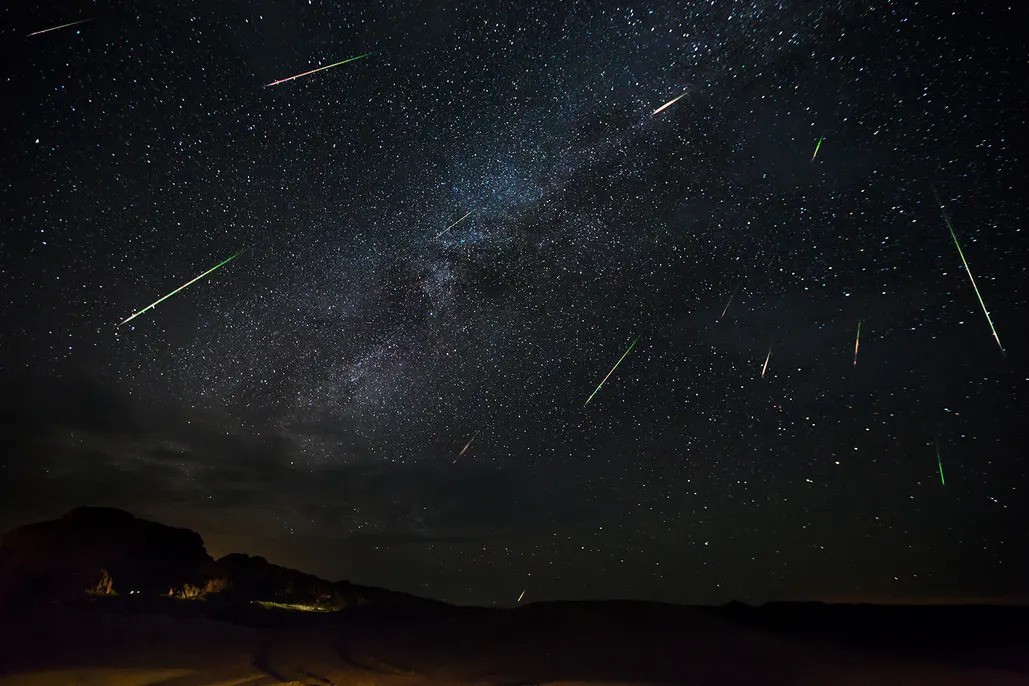Meteor showers are born when comets break up. Scientists have recently studied them and learned where in the Solar System the bodies that produced them formed.

Comet disintegration process
An international team of 45 researchers studying meteor showers has discovered that not all comets are destroyed when they approach the Sun. In a paper published in the journal Icarus, they explain the differences by conditions in the protoplanetary disk where comets formed 4.5 billion years ago.
“The meteoroids we see as meteors in the night sky are the size of small pebbles,” said the paper’s lead author, SETI Institute and NASA Ames meteor astronomer Peter Jenniskens. “They are, in fact, the same size as the pebbles that collapsed into comets during the formation of our solar system.”
When our Solar System was forming, the tiny particles in the disk around the young Sun gradually grew bigger until they were the size of small pebbles.
Today, as comets approach the Sun, they break up into smaller pieces called meteoroids. These meteoroids stay in a shared orbit with the comet for some time and can subsequently create meteor showers when they enter the Earth’s atmosphere.
“We hypothesized that comets crumble into the sizes of the pebbles they are made off,” Jenniskens said. “In that case, the size distribution and the physical and chemical properties of young meteoroid showers still contain information about the conditions in the protoplanetary disk during this collapse.”
Study of meteor showers
Jenniskens and his team of professional and amateur astronomers are using special low-light video cameras on networks around the world to track meteors as part of a project called “CAMS,” or the NASA-funded “Cameras for Allsky Meteor Surveillance.”
“These cameras measure the meteoroids’ paths, how high they are when they first light up, and how they slow down in Earth’s atmosphere,” Jenniskens said. “Specialized cameras measured the composition of some of these meteoroids.”
The team studied 47 young meteor showers. Most of them are crumbs of two types of comets: Jupiter family comets from the Kuiper Belt’s Scattered Disk beyond Neptune and long-period comets from the Oort Cloud surrounding our Solar System. Long-period comets move in much wider orbits than comets of the Jupiter family and are much more weakly held by solar gravity.
How and where did the first comets form?
“While there are exceptions in both groups, the implication is that most long-period comets formed under more gentle particle growth conditions, possibly near the 30 AU edge of the Trans Neptunian Disk,” Estrada said. “Most Jupiter family comets formed closer to the sun where pebbles reached or passed the fragmentation barrier, while primitive asteroids formed in the region where the cores of the giant planets formed.”
How is this possible? While the giant planets were growing, Neptune moved outward and scattered comets and asteroids from the remaining protoplanetary disk. This outward motion probably created the scattered Kuiper Belt disk and the Oort cloud. This would suggest that long-period comets and Jupiter-family comets have the same properties, but the team found the opposite.
“It is possible that stars and molecular clouds in the birth region of the sun perturbed the wide orbits of Oort Cloud comets early on, and the long-period comets we see today were scattered into such orbits only at a time when the sun had moved out of this region,” Jenniskens said. “In contrast, Jupiter-family comets have always been on shorter orbits and sample all objects scattered by Neptune on its way out.”
According to phys.org


